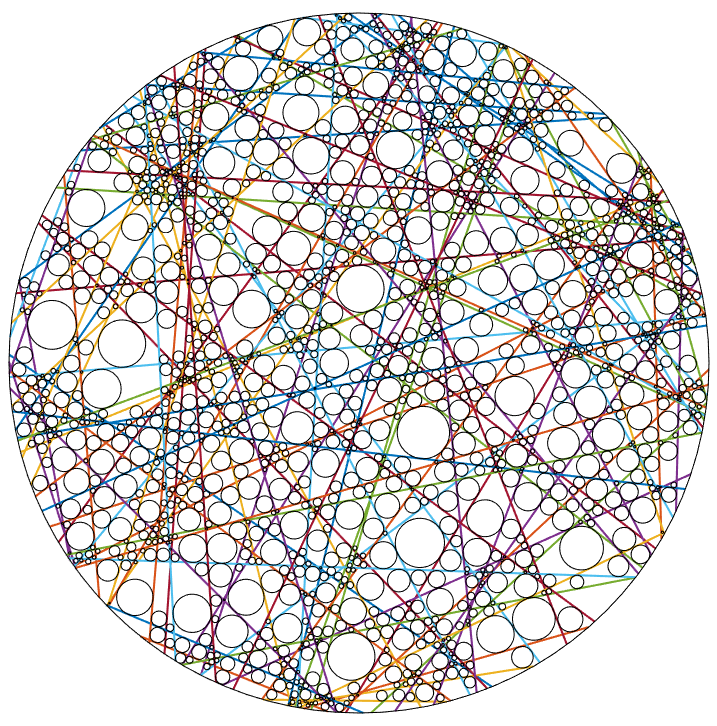Apr 29 2019
When a box filled with Mikado sticks is shaken up, do the sticks within the box spread uniformly?
 Determining the holes between the chords in a circle, by blowing up tiny holes and moving them until they cannot grow anymore. (Image credit: University of Twente)
Determining the holes between the chords in a circle, by blowing up tiny holes and moving them until they cannot grow anymore. (Image credit: University of Twente)
Such a question touches Bertrand’s paradox—a standard in mathematics. This is already an interesting question with regards to 2D, so what if one moves to 3D? And, to further complicate this, what if an individual wants to find out the size of the holes existing between the Mikado sticks—commonly referred to as “chords” in mathematics.
In order to design nano mikado boxes for photonics applications, a research team at the University of Twente wanted to figure out a way to establish the free space existing between the sticks. Now, the researchers have developed a new technique utilizing very small moveable balls that blow up. The novel technique has been reported in Physical Review E.
The fact that a traditional 19th-century paradox is reexamined for creating novel nanostructures is indeed incredible. Joseph Bertrand’s paradox is about chords—the lines that are drawn between a pair of points on a circle. If an equilateral triangle is considered and a circle can be drawn around it, what will be the length of the drawing chords that are larger than the lengths of the trial? Three different techniques that provide three different answers have been described by Bertrand. It appeared clear that the way one begins to mold the chords is very significant. The paradox was broken by Edwin Thompson Jaynes many years later. According to him, there is only one of the three techniques that have the potential to fill the circle with chords in a uniform manner. In this fashion, the circle’s center part is not more transparent when compared to the edges.
Blowing bubbles
To establish the optical characteristics of novel materials, Pepijn Pinkse along with his coworkers wanted to find out the size of the holes existing in between the chords. This says something regarding the transparency of an innovative nanostructure. Hence, the team devised a technique using an unlimited number of very small bubbles that are gradually blown up. The bubbles are moved such that they can continue to grow without getting “cut through” by a chord. The size of the hole is eventually known at the moment where no additional further growth is feasible, and one also comes to know whether the holes are spread in a uniform manner or not. For novel nano mikado boxes, this technique provides a new means of estimating the properties of the materials, for example, transparency for specific wavelengths. The outcomes are equally significant in establishing the radiation dose in, for instance, X-rays. Here, one would like to know the average length of the rays that cross a specific volume.
The Complex Photonic Systems group, which is part of the MESA+ Institute of the University of Twente, performed the study. The paper titled, “Uniform line fillings,” by Evangelos Marakis, Matthias Velsink, Lars Corbijn van Willenswaard, Ravitej Uppu, and Pepijn Pinkse, has been reported in Physical Review E, one of the journals of the American Physical Society.